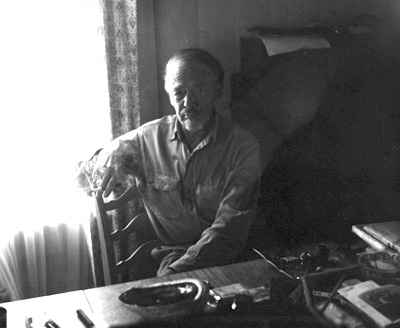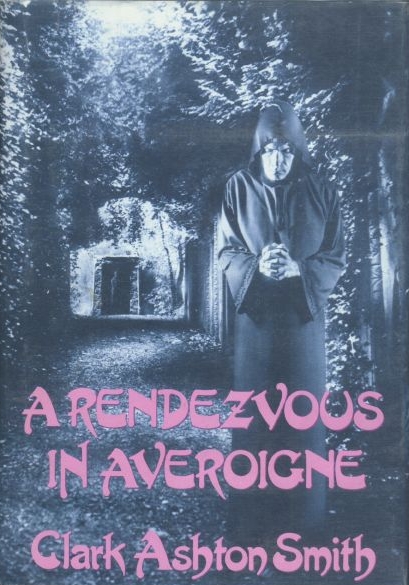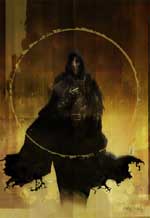Jackson Kuhl and “The Obscurity of Clark Ashton Smith”
Wednesday, January 27, 2010
posted by Deuce Richardson
 Print This Post
Print This Post
The 117th anniversary of Clark Ashton Smith’s birth last week was marked by The Cimmerian (here, here, and here), Grognardia, Black Gate, and others with accolades and remembrances. As well it should. Smith, along with Robert E. Howard and H.P. Lovecraft, formed the weird fiction triptych of the 1920s and ’30s — and in my opinion, he was the most talented member of a talented group. Yet a recurring question in many of these memorials is why Smith remains uncelebrated in comparison to his partners. This is especially vexing when you consider he outlived the other two by almost a quarter-century.
Blogger Jackson Kuhl (a personage not unknown to long-time TC readers) wrote the above in an entry he posted on Robert E. Howard’s birthday, ironically enough. Kuhl’s article, entitled “The Obscurity of Clark Ashton Smith,” answers the “vexing question” of CAS’ lack of literary prominence by pointing the finger directly at those who control Smith’s estate. Kuhl relates his (ultimately futile) struggles to publish an omnibus gathering together all of the Averoigne stories (a collection yours truly has been waiting for these past two decades). It is a disheartening tale, but one that should be read by every fan of the Bard of Auburn.
On Monday, Kuhl posted “Averoigne Addendum,” wherein he delves once more into the “public domain” questions that surround Smith’s œuvre. Again, stalemate and stagnation are the order of the day.
The whole story sounds depressingly familiar. Back in the 1990s, Robert E. Howard’s literary affairs were in a similar state of deadlock and disarray. Enter Paul Herman. A Tulsa-born hardcore REH fan and collector, Herman is an expert on intellectual property law. He “outed” the public domain status of much of the REH catalog and went to court to prove it. His efforts helped break the legal log-jam which had been keeping the works of Howard in limbo and beyond easy access to the general public. Editions of Robert E. Howard’s work from publishers like Del Rey, Wildside and Bison are the happy result of Herman’s advocacy.
When it comes to Clark Ashton Smith and his works, I do not agree with August Derleth (in general and as usual) that CAS’ “genuine uniqueness” precludes him from gaining a wider audience. What of James Joyce, for Crom’s sake? CAS’ style is no more opaque than that of some he inspired, like Jack Vance and Gene Wolfe (or, for that matter, Smith’s admirer, Lovecraft). Some smart marketing (such as Kuhl attempted) and vigorous grass-roots support (such as seen here at TC) could definitely turn the literary and popular tide in Smith’s favor. At least, that’s how I see it.
DEUCE ADDS: Despite all of the pertinent observations that Kuhl made in his blog entries, I absolutely have to take issue with his assertion (in “The Obscurity of Clark Ashton Smith”) that the continuing vitality of Robert E. Howard’s literary legacy is somehow directly linked to the fact that the mass-market paperback editions of the ’60s and ’70s sported covers by Frank Frazetta. Perhaps it is mine own misreading of Kuhl’s prose or perhaps it was poor choice of words on his part, but it seems to be the meaning of the passage I’m referring to.
The old canard that “Frazetta ‘made’ REH” needs laid to rest and I have briefly addressed the matter previously. In addition to what I’ve already noted, I have a few questions that need answered…
Did the editions of The Lord of the Rings sell millions in the ’60s due to Jack Gaughan covers? Does Lovecraft owe his prominence to the artwork of Gervasio Gallardo? Is the continuing popularity of ERB’s Tarzan due primarily to the old covers by J. Allen St. John? Would someone please explain to me why the “Death Dealer” series of Sword-and-Sorcery novels (all with awesome covers lovingly painted by Frank Frazetta and based upon one of Frank’s own characters) did not also sell in the millions (as did the Lancer/Ace Conans)?
Those are just some questions that have occurred to me. Frank Frazetta is, in my opinion, the greatest artist of the twentieth century. That said, he didn’t “make” Robert E. Howard nor could all of his talent save the “Death Dealer” novels from oblivion.



